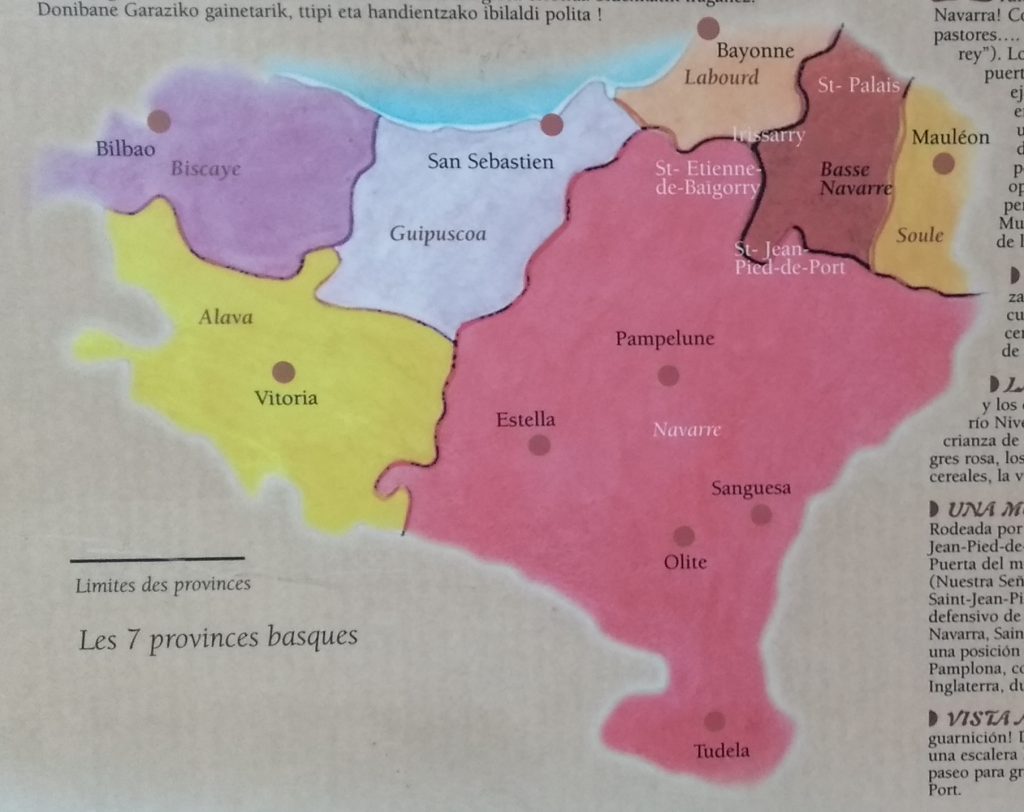
Before visiting France in 2015 I asked a friend of mine who grew up in France — what should I see? He spent all of the conversation telling me about Bayonne, and how picturesque is the French Basque region to the south. We did not get to this southwestern most part of France at that time, but I always wanted to have a look.
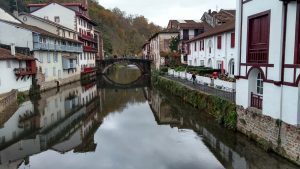
On 7 December, we rented a car in Barcelona, drove through the autonomous regions of Catalonia and Aragon, and stopped for the night near San Martin de Unx in Navarre. In pre-Roman times, the Vascones tribes lived here and became known as the Basques (Vasco in Spanish ==> Basque in French/English). The road signs are in both Spanish and Basque, and I’m told that the common language of the villages is Basque.
In the morning we drove north – skirting the edge of Pamplona and aiming for Roncesvalles, which for some reason I thought would be worth seeing (as it was the site of an epic battle between the forces of Charlemagne and the locals — and where the famed warrior Roland died) … but now it is just a cafe/hotel and church on the Camino de Santiago. I can attest that there are better places to stop for coffee.
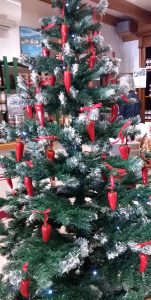
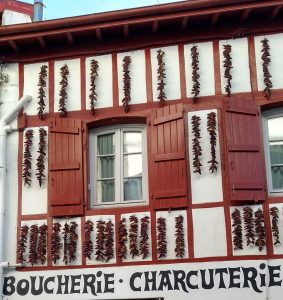
Continuing on a very winding road over the spine of the Pyrenees we eventually came to the French town of Saint-Jean-Pied-de-Port on the river Nive which runs all the way down to Bayonne.
We drove alongside the river Nive some 20km or so until we encountered a red and white village named Espelette, known far and wide for its production of red peppers. It even has its own AOC (Appellation d’Origine Controlee) for the peppers.
Finally, we came to Bayonne where we spent the next few nights. Although it gave its name to the bayonet, Bayonne is also quite famous for artisanal chocolate. Jewish chocolatiers fleeing the Spanish inquisition and its aftermath apparently decided Bayonne was a good place to settle.
Unfortunately we arrived late on Saturday afternoon — after the chocolatiers were closing for the day. They – and most of the restaurants and shops were closed on Sunday as well, so activity choices were somewhat limited during our stay.
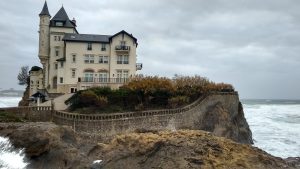
The Basque History Museum was open, with many ethnographic displays and a big display on the sport of Basque Pelota. It is a racket sport that I was vaguely aware of… This is the epicenter of the sport — so if you want to learn more, especially if you can read the signage in French, Euskara or Spanish — definitely make a stop here.
In the afternoon, we drove a few kilometers west to the ocean-side town of Biarritz. A whaling village for most of its existence, for the past 100 years or so it has been a luxurious seaside destination for royalty and the rich and famous. I think they must come in the summer though, as there wasn’t much happening on the grey and foggy afternoon when we showed up.
Monday morning we still craved some chocolate. L’Atelier du Chocolat – an artisanal chocolate manufacturer allows facility tours and we went off to have a look. They have displays of lots of antique chocolate factory equipment, as well as windows looking into the current manufacturing facility. The admission price includes lots of free samples — a perfect way to cap our stay in Pays basque.
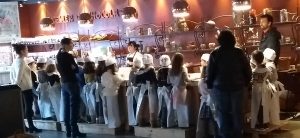
Great post!! I’d love to try some chocolate from Bayonne! I read this aloud to Miles and he also asked that you bring back some chocolate 😉
Sure! But we’ll have to ask his mother if it’s OK to start eating chocolate before he’s introduced to oatmeal 🙂
Hi Roy and Teresa,
Hope you had a wonderful Christmas! We wish you a great and happy New Year. ~ 🙂
We did, thanks! And watched the New Years fireworks with friends up on the rooftop terrace.
Bon Any Nou!
Another fascinating trip – thanks – D